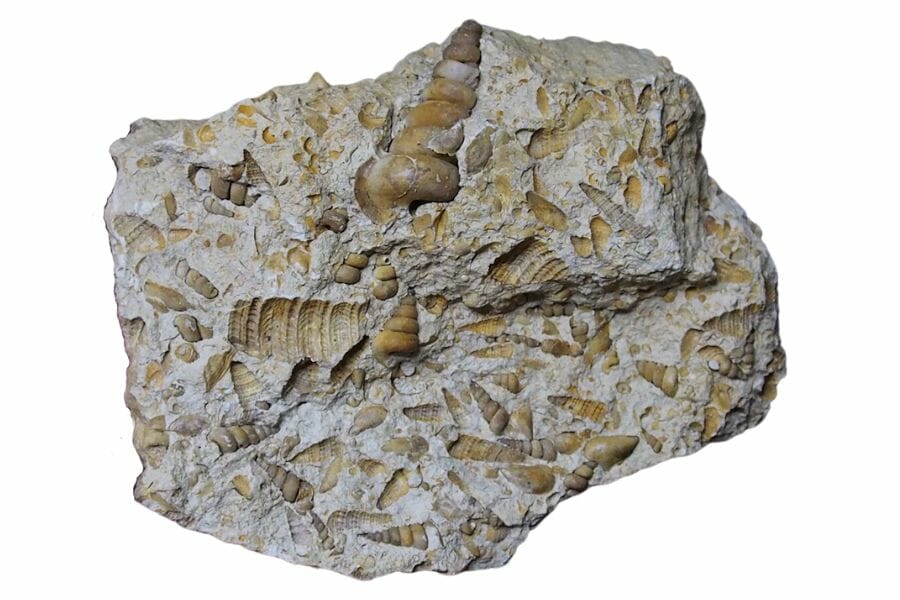Tennessee is a treasure trove for rock and mineral enthusiasts! If you have a passion for the secrets hidden within our Earth, you’re in for a treat. Tennessee fossils are like hidden gems, waiting for eager explorers to uncover them and we’re going to show you where you can find them.
As you explore, you’ll be walking on ground that holds stories from many, many years ago. It’s like flipping through the pages of a history book.
So, get ready to embark on a fun adventure. Tennessee is waiting for you to uncover its rich history, one fossil at a time! Whether you’re a seasoned collector or just starting out, you’re sure to find something that excites you.
The Fossils Of Tennessee You Can Find
The fossils found in Tennessee include preserved remains of plants, animals, and other organisms that once called Tennessee home. From the towering mountains to the deep valleys, each layer of rock tells a unique story.
But there’s more to this state than its variety of fossils. Our guide to rockhounding in Tennessee can also help lead you to other geological wonders, not just fossils.
Every find is a peek into the state’s rich history, and each discovery is a thrilling experience for explorers and collectors!
- The extensive local experience and understanding of our team
- Input from multiple local fossil hunters and fossil groups
- The accessibility of the various locations
- Safety and potential hazards when collecting
- Private and public locations
- A desire to include locations for both experienced fossil lovers and those who are just starting out
Using these weights we think we’ve put together the best list out there for those who love finding great new fossils for our collections!
Common Tennessee Fossils
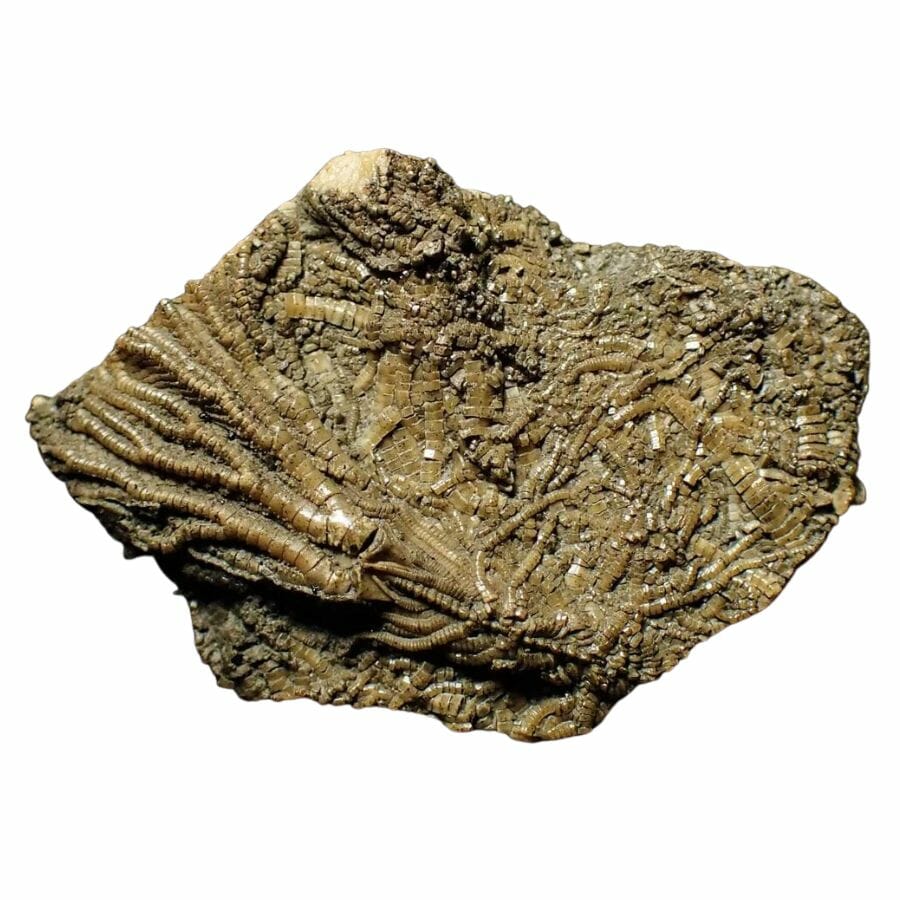
Tennessee’s land holds clues to life from long ago. As you explore, you’ll come across fossils that tell tales of the creatures and plants that once thrived here.
Let’s dive into a list of some common fossils you might encounter in this amazing state!
- Bryozoa
- Gastropods
- Brachiopods
- Crinoids
- Cephalopods
- Trilobites
Tennessee State Fossil – Pterotrigonia (Scabrotrigonia) thoracica
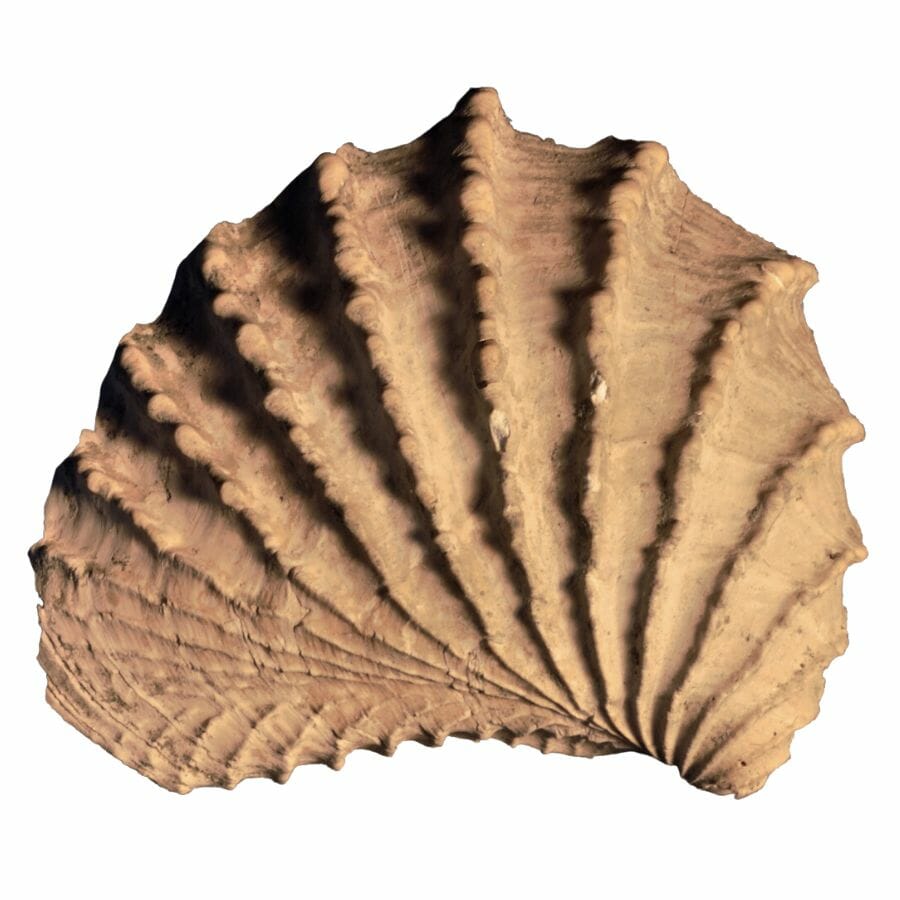
Pterotrigonia thoracica is a cool fossil that many of us get excited about. It’s a type of clam that lived a long time ago, during a period called the Cretaceous.
These clams had a special triangular shape, which makes them different from many clams we see today. Their shells were ribbed and had a rough texture.
Over time, as these creatures passed away, their remains settled in the Earth and turned into fossils.
Rare Tennessee Fossils
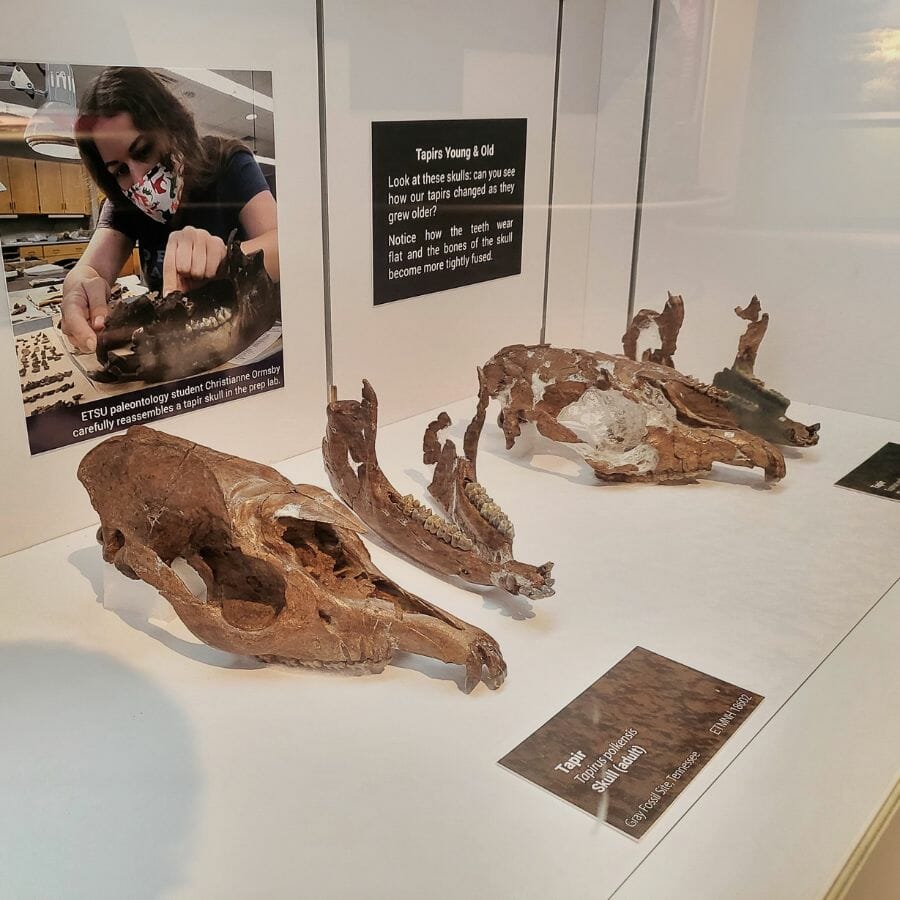
Some valuable rare Tennessee fossils are unique to the state, never seen in any other part of the world. Here are the valuable rare beauties that have been discovered beneath the surface!
- Remains of mastodons, tapirs, rhinos alligators, turtles, rodents, red pandas, and more
The Best Places To Find Fossils In Tennessee
If you’re eager to uncover these stories, there are some top spots to explore and hunt for fossils. Let’s dive into the best places in Tennessee to make these exciting discoveries!
Always Confirm Access and Collection Rules!
Before heading out to any of the locations on our list you need to confirm access requirements and collection rules for both public and private locations directly with the location. We haven’t personally verified every location and the access requirements and collection rules often change without notice.
Many of the locations we mention will not allow collecting but are still great places for those who love to find beautiful rocks and minerals in the wild without keeping them. We also can’t guarantee you will find anything in these locations since they are constantly changing.
Always get updated information directly from the source ahead of time to ensure responsible rockhounding. If you want even more current options it’s always a good idea to contact local rock and mineral clubs and groups
Coon Creek Science Center

Tennessee’s Coon Creek Science Center is a prime location to find unique fossils.
Located near the town of Adamsville, this center sits amidst rolling hills, creating a scenic backdrop for adventurers and nature lovers. The terrain here is a mix of soft sediments, which makes it a goldmine for finding common fossils.
These layers of earth capture moments from long ago, holding clues about creatures that once called this place home.
What makes Coon Creek truly special is its unique geology. The layers here are rich with a variety of marine fossils of Tennessee, offering glimpses of life from the sea that once covered this land.
For fossil hunters and budding geologists, it’s like flipping through pages of a history book, but with the thrill of discovery at every turn.
The Coon Creek Science Center is accessible by main roads, and once you arrive, there are clear paths and signs to guide you.
Whether you’re a seasoned fossil hunter or just curious about the Earth’s stories, Coon Creek is a must-visit spot in Tennessee.
Where to find fossils in Coon Creek Science Center
The Coon Creek area is known for its marine fossils, offering a snapshot of life from a time when the area was covered by a vast sea. In this region, you can find well-preserved shells, snails, and even remnants of squids in the sediment layers.
The most abundant fossils are often found embedded in the soft, clay-like soil that makes up much of the Coon Creek beds.
If you want REAL results finding incredible rocks and minerals you need one of these 👇👇👇
Finding the coolest rocks in isn’t luck, it's knowing what to look for. Thousands of your fellow rock hunters are already carrying Rock Chasing field guides. Maybe it's time you joined the community.
Lightweight, mud-proof, and packed with clear photos, it’s become the go-to tool for anyone interested discovering what’s hidden under our red dirt and what they've already found.
Join them, and make your next rockhounding trip actually pay off.
What makes it different:
- 📍 Find and identify 140 incredible crystals, rocks, gemstones, minerals, and geodes across the USA
- 🚙 Field-tested across America's rivers, ranchlands, mountains, and roadcuts
- 📘 Heavy duty laminated pages resist dust, sweat, and water
- 🧠 Zero fluff — just clear visuals and straight-to-the-point info
- ⭐ Rated 4.8★ by real collectors who actually use it in the field
Gray Fossil Site
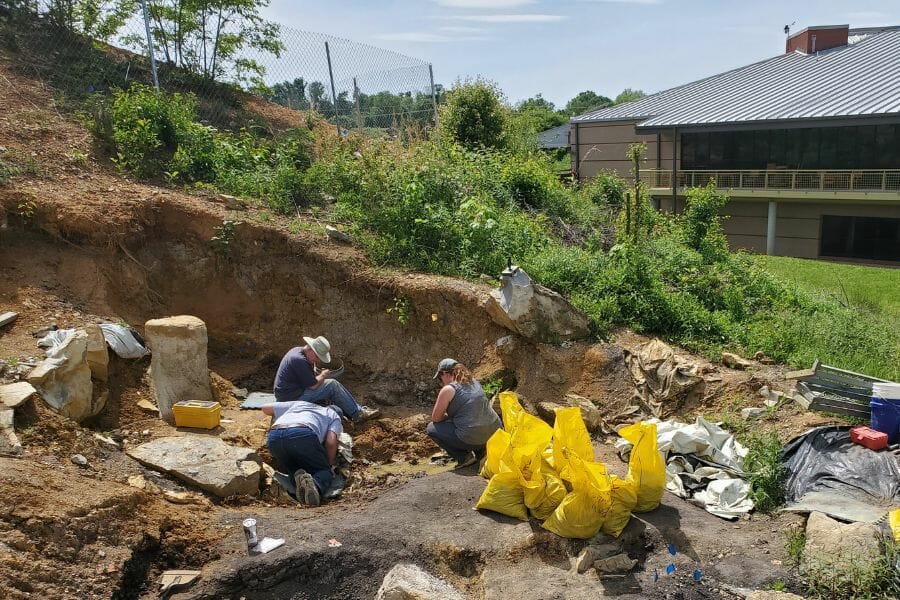
The Gray Fossil Site is a fascinating spot located near the town of Gray. This area was once a pond surrounded by a lush forest, which over time became a rich deposit for fossils.
The terrain at Gray Fossil Site is mostly made up of clay and silt, revealing layers of earth that hold the remains of various animals and plants.
The rare fossils discovered here give us insight into life from millions of years ago.
Geologically, the site is unique because it captures a specific slice of time, preserving a diverse range of species in one place. The mix of fossils found here suggests a vibrant ecosystem with both woodland and aquatic life.
If you’re planning to visit, the journey to the Gray Fossil Site is straightforward. Major roads lead to the site, and it’s well-marked, ensuring visitors can reach it with ease.
Once there, pathways and signs help guide the way, making it an exciting and educational adventure for anyone interested in the stories held within our Earth.
Where to find fossils in Gray Fossil Site
In the Gray Fossil Site’s layers of clay and silt, one can discover fossils of various creatures like mastodons, red pandas, and even alligators. Additionally, plant fossils in Tennessee give hints about the vegetation that once flourished there.
Nashville

Known as the “Music City,” Nashville is famous for its country music roots and vibrant arts scene.
Geographically, Nashville sits in the basin of the Cumberland River, surrounded by gentle hills and fertile land.
The terrain around Nashville is quite varied, with rolling hills and limestone-rich soil. This limestone is special because it has captured and preserved many fossils over millions of years.
So, while Nashville gets a lot of attention for its tunes, it and the nearby regions are also packed with geological stories. From shells to traces of sea creatures, there’s a lot more to the ground beneath than meets the eye.
Nashville is well connected by highways, and the city’s airport welcomes flights from all over. So, whether you’re coming for the music or the fossils, Nashville is an exciting stop on any Tennessee journey.
Where to find fossils in Nashville
The limestone-rich soil of the area holds traces of sea creatures, especially shells and small marine life.
One notable spot to search is Red Caboose Park, where a rock wall is known to yield plenty of these marine fossils. By exploring such sites, you can discover pieces of history hidden right beneath your feet.
Parsons

If you’re into fossil hunting, Tennessee offers some cool spots, and Parsons is definitely one of the top places to check out!
Parsons is a charming town nestled in West Tennessee. This area is cradled by the Beech River, giving it a mix of landscapes from rippling waters to dense woods.
The terrain here is a blend of flatlands and gentle hills, providing a scenic backdrop for those who visit or live there.
Geologically speaking, Parsons stands on layers of sedimentary rock, which tell tales of environments from long ago. The presence of various rocks and minerals hints at the region’s dynamic past, shaped by water and time.
For us, this means there’s always something interesting waiting just below the surface!
Reaching Parsons is quite straightforward. The town is accessible by well-maintained roads, ensuring a smooth ride for travelers.
Where to find fossils in Parsons
By exploring areas in Parsons with exposed rock surfaces, one can find traces of shells and small sea creatures. Places near the Beech River or eroded hillsides are especially good spots to spot these hidden fossils.
Franklin
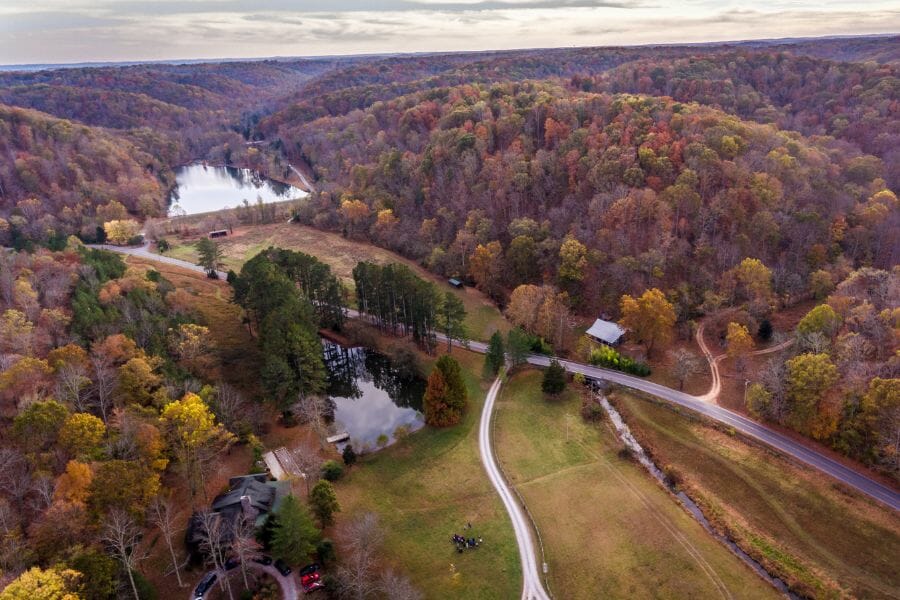
Franklin isn’t far from the state’s capital, Nashville. It’s set in the heart of Williamson County and is surrounded by a mix of open fields and wooded areas.
Geographically, it’s a blend of gentle hills and flatlands, showcasing the state’s diverse terrain.
The ground beneath Franklin tells a fascinating geological story. Layers of sedimentary rock lie beneath, holding secrets of the region’s past environments and ecosystems.
Limestone is a common rock type here, and it often holds interesting fossils from times gone by.
Major roads and highways connect Franklin to other parts of Tennessee, making it easily accessible whether you’re driving from the north, south, east, or west.
Where to find fossils in Franklin
Areas with exposed rock surfaces, like quarries or eroded sections near waterways, can be good places to search. You can find fossils, like shells and marine critters, embedded in the rock layers.
Other Top Places To Find Tennessee Fossils By Region
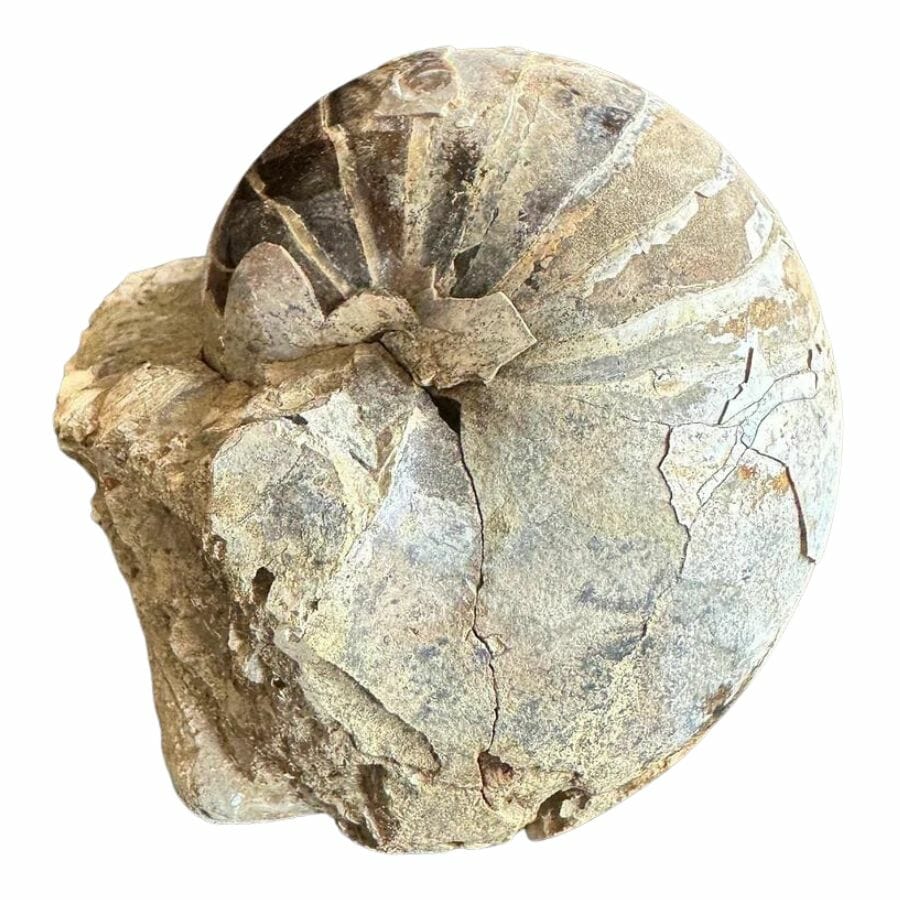
Here’s a list of other areas in the state where you can uncover these fascinating fossils.
| Location | Fossils |
| Oliver Springs, Anderson County | Brachiopods, gastropods, trilobites |
| Mississippian Oolitic Limestones, Bedford County | Blastoids |
| Shelbyville, Bedford County | Tetradium, Cyrtodonta, Lichenaria, Rhinidictya, other bryozoa, Leperditia, gastropods, pelecypods |
| Camden, Benton County | Bucanella |
| Holladay, Benton County | Ostracods, other macrofossils |
| Friendsville, Blount County | Brachiopods |
| Maryville, Blount County | Trilobites Kingstonia |
| Jellico, Campbell County | Bones, scales, shark teeth, leaves, stems, bark; pipeorgan structures |
| Hollow Rock, Carroll County | Abundant Cretaceous Upper plants, fish |
| Tullahoma, Coffee County | Spirifer, Rhipidomella, bryozoa, Ostracods, Hebertella, Rafinesquina, Orthorhynchula, Constellaria, bryozoa, pelecypods, gastropods |
| Fort Negley, Davidson County | Platystrophia, Orthorhynchula, bryozoa, Cyclonema, Tetradium, Constellaria, Drepanella, Saffordella, Isochilina, Homotrypa |
| Pegram, Davidson County | Brachiopods, corals, cephalopods, trilobites, invertebrates |
| White Creek Springs, Davidson County | Agaricocrinus, Dorrycrinus, Lobocrinus |
| Dowelltown, DeKalb County | Synthetodus fragments and teeth |
| Brownsport Formation, Decatur County | Blastoids Troosticrinus |
| Jeannette, Decatur County | Diverse ostracods, other macrofossils |
| Trenton, Gibson County | Tropidodiscus |
| Bunker Hill, Giles County | Haminea (Bulla) |
| Lester, Giles County | Constellaria, bryozoa, Stromatocerium, Lophospira, Skolithus, Dalmanella |
| Pulaski, Giles County | Catheys |
| Cherokee Reservoir | Aphelaspis, Paraphlepsius, Pseudagnostus, Dytremacephalus |
| Eidson, Hawkins County | Fish plates, invertebrates, Ganoid fish teeth |
| Rogersville, Hawkins County | Aphelaspis, Pseudagnostus, Dytremacephalus, Blountia, Coosia, Maryvillia, Tricrepicephalus, Maryville, Coosella, Modocia, Norwoodia, Genevievella |
| Antioch Church, Henry County | Diverse ostracods, other macrofossils |
| Knoxville, Knox County | Olenellus fauna |
| Fayetteville, Lincoln County | Saccospongia, Hebertella, Rafinesquina, Rhynchotrema, Leperditia, Hormotoma, Oxydiscus, Tetradium, Skolithus |
| Brassfield Limestone | Lindstroemella, Orthis |
| Belfast, Marshall County | Constellaria, Hormotoma, Tetradium, Stromatocerium, Cyrtodonta, gastropods |
| Columbia, Maury County | Rafinesquina, Platystrophia, Cyphotrypa, Escharapora, Cyclonema, Lophospira, Orthorhynchula, Tetradium, Stromatocerium, Heterotrypa, Solenopora |
| Darks Mill, Maury County | Chelonia, Mammuthus, Megalonyx |
| McNairy County area outcrops | Exogyra, Gryphaea |
| Gilmore Bridge, Perry County | Brachiopods, bryozoa, trilobites |
| Lowville Formation, in area limestone outcrops | Tetradium, Streptelasma, Columnaria, Salterella, Stromatocerium, gastropods |
| Overall Creek, Rutherford County | Ammonites |
| Allisona, Rutherford County | Columnaria, Hebertella, Peronopora, Platystrophia, Constellaria, Lophospira, Heterotrypa, brachiopods, gastropods |
| Bethesda, Williamson County | Rhynchotrema, Hebertella, bryozoa |
| Alexandria, Wilson County | Cryptophragmus, Tetradium, Rhynchotrema, Cyrtolites |
Common Questions About Fossil Hunting In Tennessee
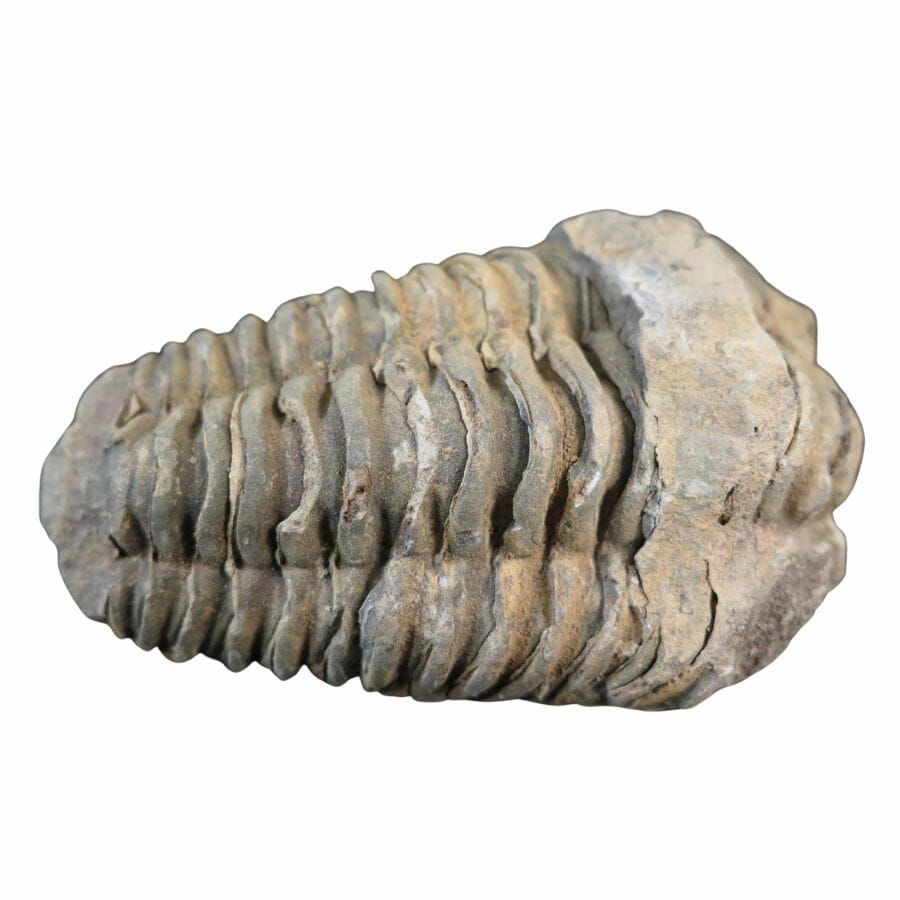
From the types of fossils present to the best places to find them, there’s a lot to learn and discover. Here are the answers to the most common questions about Tennessee’s fossil treasures.
Can you find megaladon teeth or sharks teeth in Tennessee?
Megalodon teeth aren’t among the rare fossils you might find when you explore the state. Neither are shark teeth.
Most megalodon teeth and shark teeth are found in coastal states where the ancient oceans they inhabited once existed.
If you’re on the hunt for shark teeth, you’re more likely to find success along the coastlines, especially in states like Florida or the Carolinas.
Is it illegal to collect fossils in Tennessee?
There are some rules you have to follow when collecting fossils in Tennessee. On state-owned lands, like state parks or natural areas, collecting fossils is not allowed. These areas are protected so that everyone can enjoy and learn from them.
You can check in with the Bureau of Land Management Southeastern States District Office to see what you can and cannot do on public land.
If you’re on private property, you always need the landowner’s permission before you start looking for fossils. It’s not just polite; it’s the law.
There are places where you can legally hunt for the fossils of Tennessee, but it’s essential to know the regulations of each location. Some areas might have specific rules about what you can take or how much you can collect.
Can you find dinosaur bones in Tennessee?
Tennessee is a fascinating spot for valuable rare fossils! But the state isn’t a prime place for dinosaur bones. This is because most of the rock layers in Tennessee are either too old or too young to have dinosaur fossils.
Dinosaurs lived during a time called the Mesozoic Era, but much of Tennessee’s exposed rocks are from the Paleozoic or Cenozoic Eras, which are before and after the time of dinosaurs.
Though you won’t find dinosaur bones in Tennessee, that doesn’t mean there aren’t exciting fossils to find! Tennessee is home to lots of marine fossils, like trilobites, brachiopods, and even ancient shark teeth.
How do you identify the fossils that you find?
Start by observing the shape and size of the fossil. Many times, the form of the fossil can give you a clue. For instance, a spiral shape might mean it’s an ammonite or a snail.
Next, think about the rock type you found it in. Certain fossils are more likely in specific rocks. For example, marine fossils are often in limestone because limestone forms in oceans and seas.
Having a good fossil guidebook for your area is super handy. You can compare the fossil in your hand to the pictures in the book. It’s like matching a face to a name!
Lastly, join a local rock and fossil club or go online to share your finds. Many folks in these groups have years of experience and love helping others identify their treasures.
Remember, practice makes perfect. The more fossils you see and identify, the better you’ll get at it!
Our Favorite Places To Buy Fossils In Tennessee

There’s an easier way to get your hands on some Tennessee fossils. Visit these shops to get your fill of fossils and the state’s other geological wonders:
- Pigeon Forge Gem Mine – 2865 Parkway, Pigeon Forge, TN 37863
- Nashville Crystal Store – 2819 Columbine Pl #7, Nashville, TN 37204
- Stones Of Spirit – 6712 Kingston Pike, Knoxville, TN 37919
- Alex’s Rock Shop – 100 S Main St, Shelbyville, TN 37160
- Jae’s Gem Mine – 2416 Music Valley Dr #102, Nashville, TN 37214
- Mine Shaft Gems & Minerals – 8240 US-64, Bartlett, TN 38133
- The Rock Spot – 3475 Parkway, Suite 3, Pigeon Forge, TN 37863

